
A decade of teaching the Art of Science Communication
I wish I hadn’t vaccinated my child, the hairdresser said.
Hannah Alexander, an associate professor emerita at the University of Missouri, had been going to the same hairdresser for more than 10 years, and, despite their different lives and backgrounds, they’d become close friends.
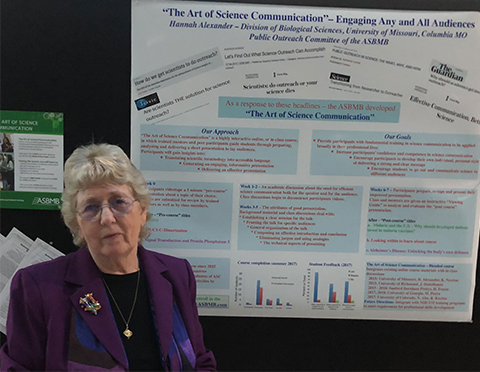
“I kind of went off the deep end,” Alexander said. “And she was holding the scissors.”
When Alexander asked for an explanation, she found out that her hairdresser had no idea where to look for accurate scientific information that she could understand.
“On the way home, I was thinking, ‘It’s not her fault,’” Alexander said. “‘It’s my fault. Nobody’s ever reached out to her.’
“We need to tell people that they have a place in science,” she said. “Science is not exclusive.”
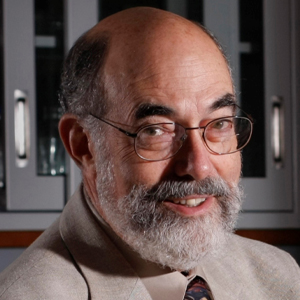
Thomas Baldwin, an emeritus professor of biochemistry at the University of California, Riverside came to a similar conclusion when he learned how little most politicians know about science.
“The onus is on us as scientists to find a way of translating the science out of the polysyllabic world into the world of everyday lay language,” Baldwin said.
Thus, the Art of Science Communication course, or ASC, was borne. Baldwin and Alexander worked with Susanna Greer, chief scientific officer at the V Foundation, and Geoff Hunt, former American Society for Biochemistry and Molecular Biology outreach manager, to build an eight-week course that would equip participants with the skills and knowledge to effectively and confidently present their science to nonexperts. Their original audience was science trainees. However, in the 10 years since its founding, professionals from all areas of science have benefitted from the course.
As of 2023, 528 scientists from all over the world had completed the ASC online. Students have included undergraduates, graduate students, postdocs, faculty members, meteorologists, engineers, political scientists, entrepreneurs, medical writers and more.
John Tansey, a professor of chemistry at Otterbein University, has taken and facilitated the course numerous times since its inception. As a facilitator, he provides feedback and guides the discussions among participants each week.
“I did not go into science thinking I was going to be a communicator, but it’s clearly part of my job,” Tansey said. “I think it’s part of all of our jobs at this point.”
Science as a story
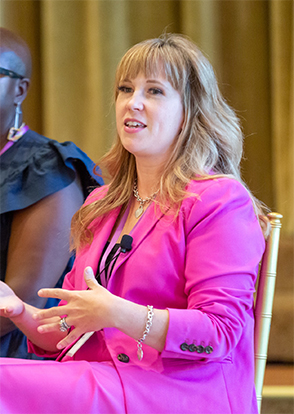
Nicole Woitowich helped develop the ASC when she was a graduate student. She is still intimately involved, and she runs a satellite version of the course at Northwestern University Feinberg School of Medicine, where she is now a research assistant professor of medical social sciences.
Telling a story is one of the best ways to communicate science, Woitowich said, and thus, is a big focus of the ASC.
“Storytelling has been around since the dawn of humanity,” she said. “It’s how we communicate information. Scientists are not taught to be storytellers. We’re trained to be very dry, factual and to the point. We’re not trained to bring emotion into our work. ... The course helps people overcome that and shift their mindset.”
Most scientists write and even talk in the third person in papers and presentations, completely removing themselves from the equation. Woitowich said she thinks this is a mistake.
“I often tell folks that, really, you are the person people want to hear about,” Woitowich said. “They want to hear about your journey and connections to the work you’re doing. I try to help people shift that mindset because I think the narrator, the protagonist, makes the most compelling story.”
'Science is for everyone'
“Relatively few scientists will take the time to explain really basic science concepts to someone who is not a scientist,” Baldwin said.
The ASC stresses that science jargon is a different language and that good science communicators find the language that works best for their audience.
“The bottom line to me is that science is for everyone,” Greer said. “If the scientific community continues to embrace that, we’ll just get better as a society.”

Following this principle, Tansey designs outreach activities with his students at Otterbein with different audiences in mind. At a local science fair, Tansey’s group creates several visual aids and activities that they can bounce back and forth between depending on their audience. One year, their exhibit taught participants about the sense of smell.
“We had different smelly compounds that little kids could smell,” Tansey said. “We also had a little matching game where they had to take 3D molecules and fit them into different receptors on a poster board to show that these molecules must bind to a receptor to get a signal on your brain.
“For older kids, we had another poster that talked more in detail about how signals go from neuron to neuron and how signal transduction works. So, we could hit the concept at different levels with either little kids or adults or anyone in between.”
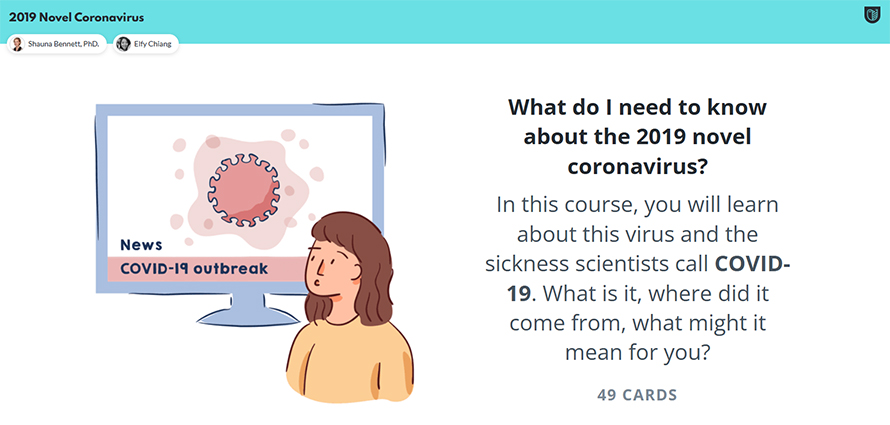
Shauna Bennett is an assistant teaching professor at Georgetown University. She said taking the ASC taught her that she must adapt her language and medium to meet the audience’s needs. During the COVID- 19 pandemic, she helped write a science comic to teach people with little scientific knowledge about SARS-CoV-2. With this project, she had to balance the known and unknown without losing trust.
“I think that the biggest challenge in teaching science, is how to explain uncertainty without having the answers,” Bennett said.
Empathy
According to the National Science Foundation, public confidence in science and scientists has remained relatively constant throughout the 21st century. However, a 2024 survey showed that most Americans rarely engage in scientific activities, such as helping a child with a science project or participating in a citizen science event.
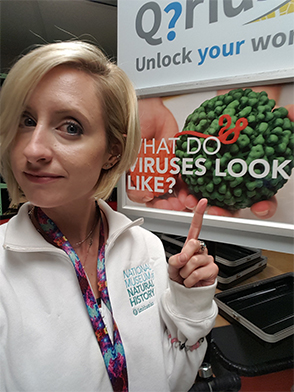
In the early 2010s, “When the course was created, I think the world was a little bit more innocent,” Tansey said. “Partially due to the recent (COVID- 19) pandemic, lack of funding, global warming and other scientific issues.”
Furthermore, studies have shown that public trust in scientists has fallen since 2016, mainly in the areas of medicine and climate change. A recent NSF survey showed that 60% of American adults report understanding experimental logic, but only 50% could correctly identify a scientific hypothesis. That familiarity with scientific concepts positively correlated with overall trust in science.
“Now, there’s a huge section of the public at large who are science skeptical,” Baldwin said. “Science is in the ditch.”
Communicating with skeptics is important, he stressed, and establishing respect for your audience is key.
“People say, ‘Oh, you have to dumb it down,’” Baldwin said. “As soon as you say that, you’re lost.”
Christina Nixon, who is now the senior scientific director of medical and scientific services at Alphanumeric Systems, took the ASC in 2015.
“The person (we are communicating with) is an intelligent human being,” Nixon said. “They don’t have the same pieces of information that you have … So, you’ve got to try to find common ground and think about common knowledge pieces that you can build from.”
Bennett agreed and said taking the course taught her to step into the shoes of her students to become a better teacher.
“I think a big part of communication is having empathy for the person that you’re talking to,” she said. “As scientists, we are trained to be seen as competent to our mentors, professors and bosses. We want to seem like we’re able to keep up with the jargon and the ideas. When you’re on the side of communicating with people who are not scientists, it’s really hard to transition into a completely different way of sharing ideas.”
Combatting misinformation
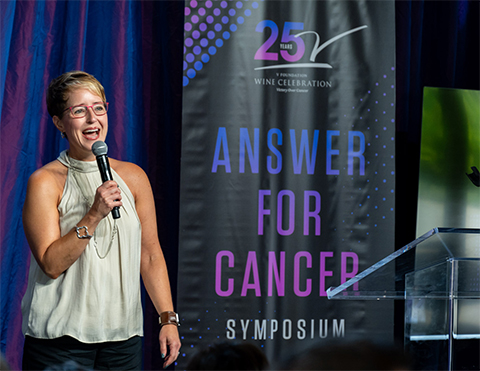
According to the Pew Research Center, more households in the U.S. have internet access than ever before. Combined with the rise in social media use, it has become easier to spread misinformation. A recent survey showed that, as of February 2024, more than 30% of news consumers saw false or misleading information in the media within the last week.
“There’s urgency now for scientists to communicate with their neighbors, their peers, government, with everyone,” Tansey said.
Greer said this urgency is partially due to the COVID-19 pandemic, which she describes as a “science communication miss.”
“I don’t want people to fear science or scientists or advances,” Greer said. “Because life will continue to happen, scary things will continue to happen, and I want people to see science and scientists as solution bringers.”
According to Woitowich, the ASC is specifically designed not just to convey scientific knowledge but to counter misinformation by fostering dialogue, a growing necessity in the age of widespread misinformation about science.
In 2020, Woitowich and other ASBMB members conducted a survey of over 160 past ASC participants. According to the survey results, scientists said they were significantly more likely to communicate with nonexpert audiences following the course.
“There are so many voices out there on the internet nowadays,” Bennett said. “I think fighting those distractions, it’s going to take a lot more than just knowing the audience you have in front of you; it’s going to come down to how do you even get their attention, which is so much more than just the title of a talk.”
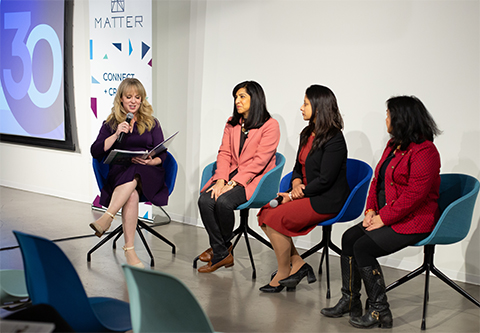
Scicomm on Capitol Hill
The spread of false information or lack of communication could also have an impact on funding allocated by the U.S. government for basic scientific research.
“I think that it is our duty as scientists to explain what we do and why we do it,” Greer said. “Unless you are doing science in your garage, you’re not the one paying for it … most of us are funded by taxpayers or the federal government.
“Quite frankly, you owe it to them to explain why you’re doing what you’re doing in a way that it can be relevant and interesting and exciting,” she said, “so that taxpayers find a reason to use their tax dollars to fund more of it.”
According to the NSF, the federal government funded about 60% of all nonclinical research carried out in the U.S. in 2000. However, that proportion has declined over time and reached 40% in 2022.
“Communication impacts the work we do on a federal level, as the majority of scientific funding comes from, at least in my field, the National Institutes of Health as well as the National Science Foundation,” Woitowich said. “We really need to think about how we drive support and trust in science, which circles back to our ability to do science in the United States.”
Isha Verma is a research staff member at the University of Michigan Neuroscience Institute. She said she used the skills she gained from the ASC to converse effectively with policymakers on Capitol Hill as an ASBMB Advocacy Training Program delegate.
“The course provides scientists with different tools and strategies to relate to policymakers and funding agencies on cultural, educational or social levels, and influences their perception and trust in research,” Verma said. “It is crucial to frame your research in terms of its social and economic benefits.”
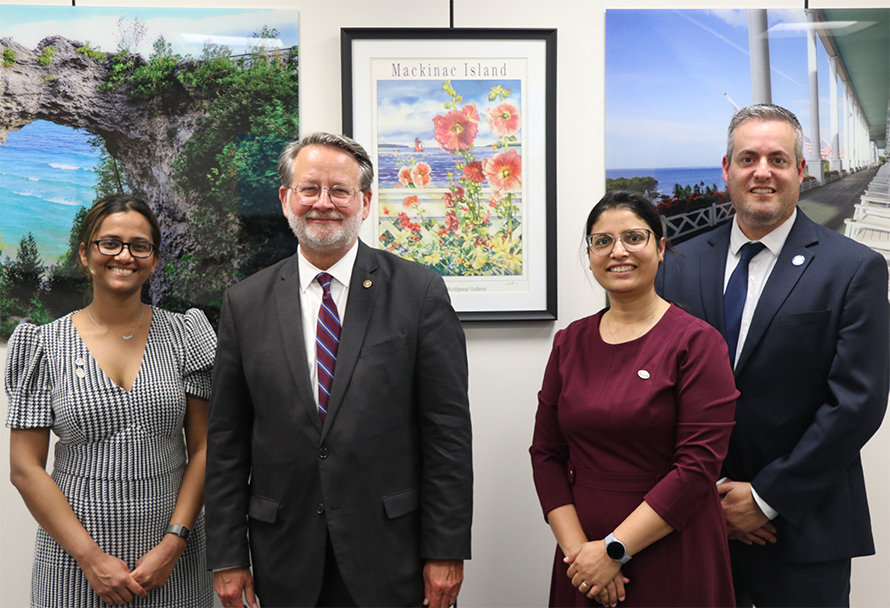
A confidence boost
According to the 2020 survey of ASC alums, all respondents reported a significant increase in their confidence levels after taking the course.
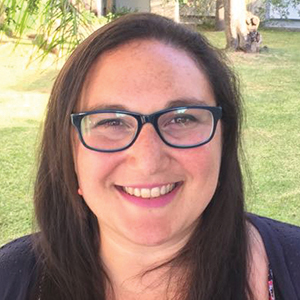
Ana Zambrana, who teaches biology and English at the Dirección General de Educación Técnico Profesional in Montevideo, Uruguay, said that was true for her.
In 2015, when she was struggling through her master’s degree, Zambrana took the ASC, and was pleasantly surprised at its focus on the participants.
Bennett explained that, in the course, “we talk a lot about selling yourself, which can be a departure for many scientists.”
Zambrana said the course gave her the confidence to forge ahead.
“When I saw a tweet about the course and signed up, it was a lifechanging moment,” she said. “The course really helped me to finish my master’s thesis.
“I was very scared, and I wanted to perform in a professional manner,” she said. “It gave me the opportunity to strengthen my skills, compare ideas and change my point of view. When you are doing a thesis, you are so hyper-focused that you lose sight of the rest of the field.”
Zambrana, whose native language is Spanish, said the course also strengthened her science communication skills in English.
“The course gave me the chance to rehearse in a different way, in another language,” she said.
During Zambrana’s thesis defense, Uruguay experienced a national electrical blackout. She credits the ASC with giving her the confidence to finish the presentation, without any visual aids.
“It was a very frustrating and stressful situation,” she said. “I had to finish, as they say, a cappella, … without any support or graphics … But after the defense, my committee congratulated me and said they didn’t think I could pull it off.”
After successfully defending her thesis, Zambrana gave back to her community by offering a version of the ASC in Spanish in her home country.
“The opportunity to take the course gave me strength in my professional life and also in my personal life,” Zambrana said. “It gave me a perspective that I didn’t have before and the chance to be part of the community. It was a very beautiful challenge.”
Enjoy reading ASBMB Today?
Become a member to receive the print edition four times a year and the digital edition monthly.
Learn moreFeatured jobs
from the ASBMB career center
Get the latest from ASBMB Today
Enter your email address, and we’ll send you a weekly email with recent articles, interviews and more.
Latest in Careers
Careers highlights or most popular articles
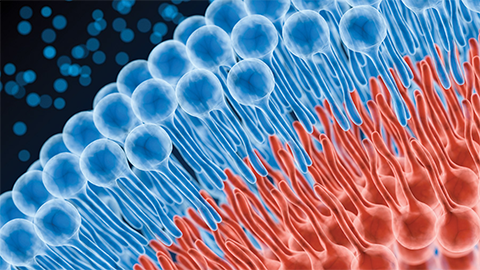
Upcoming opportunities
The Lipid Research Division Seminar Series returns Oct. 15 with talks on recent advances in triglyceride cycling in adipocytes.

Writing with AI turns chaos into clarity
Associate professor shares how generative AI, used as a creative whiteboard, helps scientists refine ideas, structure complexity and sharpen clarity — transforming the messy process of discovery into compelling science writing.
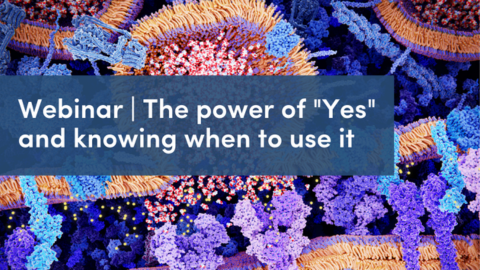
Upcoming opportunities
Register for the free ASBMB webinar on the power of "Yes" and knowing when to use it, coming up on Sept. 30!
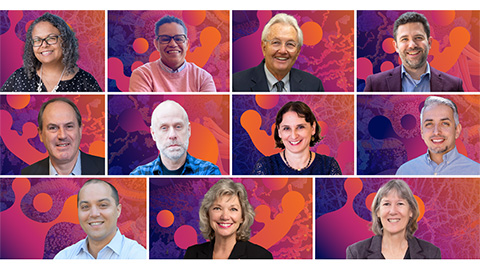
ASBMB names 2026 award winners
Check out their lectures at the annual meeting in March in the Washington, D.C., metro area.
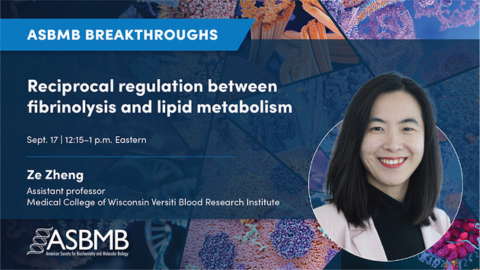
Upcoming opportunities
Register for the free ASBMB Breakthroughs webinar on lipid metabolism, coming up on Sept. 17!
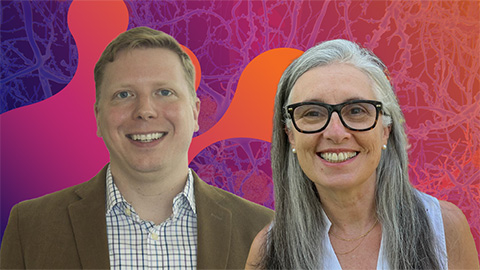
Peer through a window to the future of science
Aaron Hoskins of the University of Wisconsin–Madison and Sandra Gabelli of Merck, co-chairs of the 2026 ASBMB annual meeting, to be held March 7–10, explain how this gathering will inspire new ideas and drive progress in molecular life sciences.

